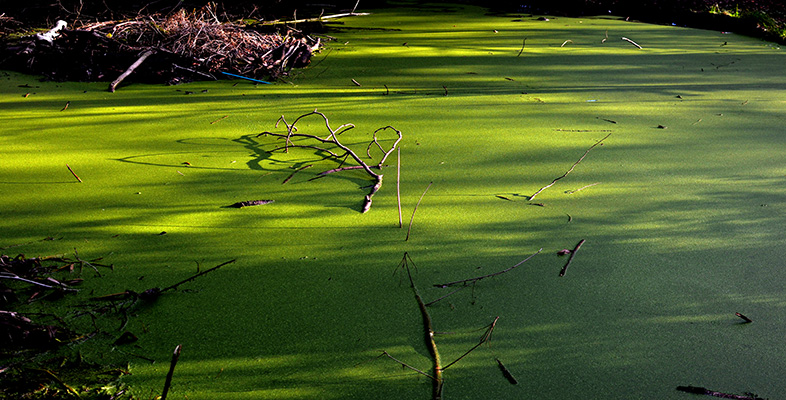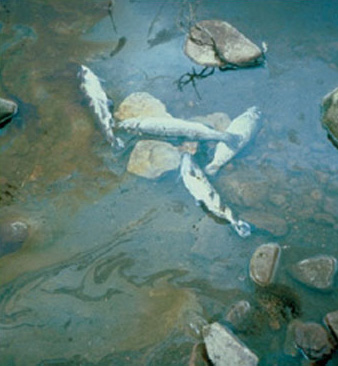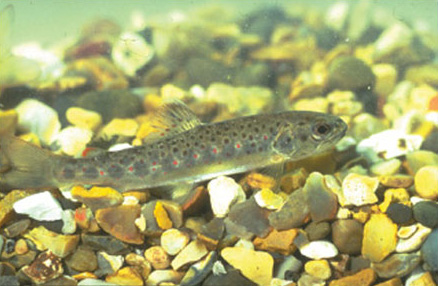2.2 Effects on consumers in freshwater ecosystems
Increased productivity tends to increase rates of deoxygenation in the surface layer of lakes. Although phytoplankton release oxygen to the water as a byproduct of photosynthesis during the day, water has a limited ability to store oxygen and much of it bubbles off as oxygen gas. At night, the phytoplankton themselves, the zooplankton and the decomposer organisms living on dead organic matter are all respiring and consuming oxygen. The store of dissolved oxygen thus becomes depleted and diffusion of atmospheric oxygen into the water is very slow if the water is not moving.
SAQ 11
What s the relative rate of oxygen diffusion in water compared with its rate in air?
Answer
Oxygen diffuses through water at approximately one ten-thousandth of its rate through air.
Still waters with high productivity are therefore likely to become anoxic.
Figures 2.5 and 2.6 give an example of the change in aquatic invertebrate species following eutrophication. In unpolluted water, mayfly larvae may be found. In polluted water, these species cannot survive due to reduced oxygen availability and are likely to be replaced by species, such as the bloodworm, which can tolerate lower oxygen concentrations.
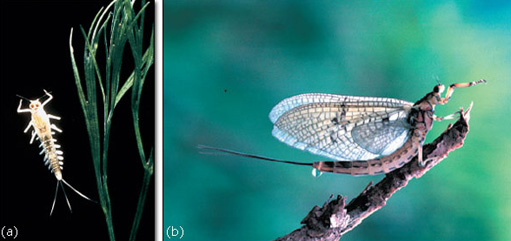
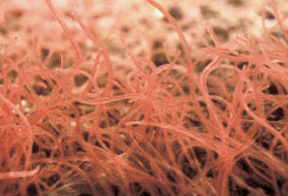
Many species of coarse fish, such as roach (Rutilus rutilus, a cyprinid fish, Figure 2.7), can also tolerate low oxygen concentrations in the water, sometimes gulping air, and yields of fish may indeed increase due to the high net primary production (NPP) of the system. However these species are generally less desirable for commercial fishing than others such as salmon (Salmo salar, a salmonid fish, Figure 2.8), which depend on cool, well-oxygenated surface water. Populations of such species usually decline in waters that become eutrophic (Figure 2.9); they may be unable to live in a deoxygenated lake at all, resulting in fish kills (Figure 2.10). They may also be unable to migrate through deoxygenated waters to reach spawning grounds, resulting in longer-term population depressions.
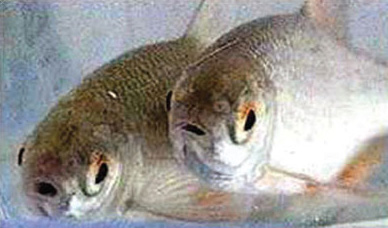
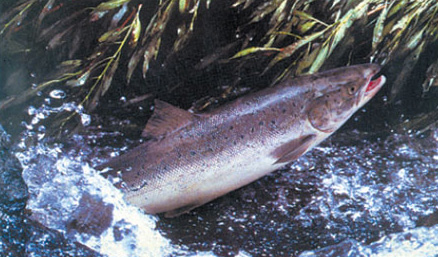
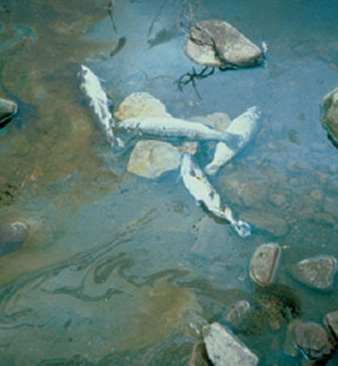
Lake Victoria is one of the world’s largest lakes and used to support diverse communities of species endemic to the lake (i.e. species that are found only there), but it now suffers from frequent fish kills caused by episodes of deoxygenation. In the 1960s deoxygenation was limited to certain areas of the lake, but it is now widespread. It is usually associated with at least a tenfold increase in the algal biomass and a fivefold increase in primary productivity.
When eutrophication reaches a stage where dense algal growth outcompetes marginal aquatic plants, even relatively tolerant fish species suffer from the consequent loss of vegetation structure, especially young fish (Figure 2.11). Spawning is reduced for fish species that attach their eggs to aquatic plants or their detritus, and fish that feed on large plant-eating invertebrates, such as snails and insect nymphs, suffer a reduced food supply.
SAQ 12
In a southeast Asian village where cyprinid fish from the local pond are an important source of protein, eutrophication of the water by domestic sewage is seen as advantageous. Why?
Answer
The cyprinid fish are tolerant of deoxygenation, and the increased NPP boosts their food supply; therefore the yield of fish improves.
